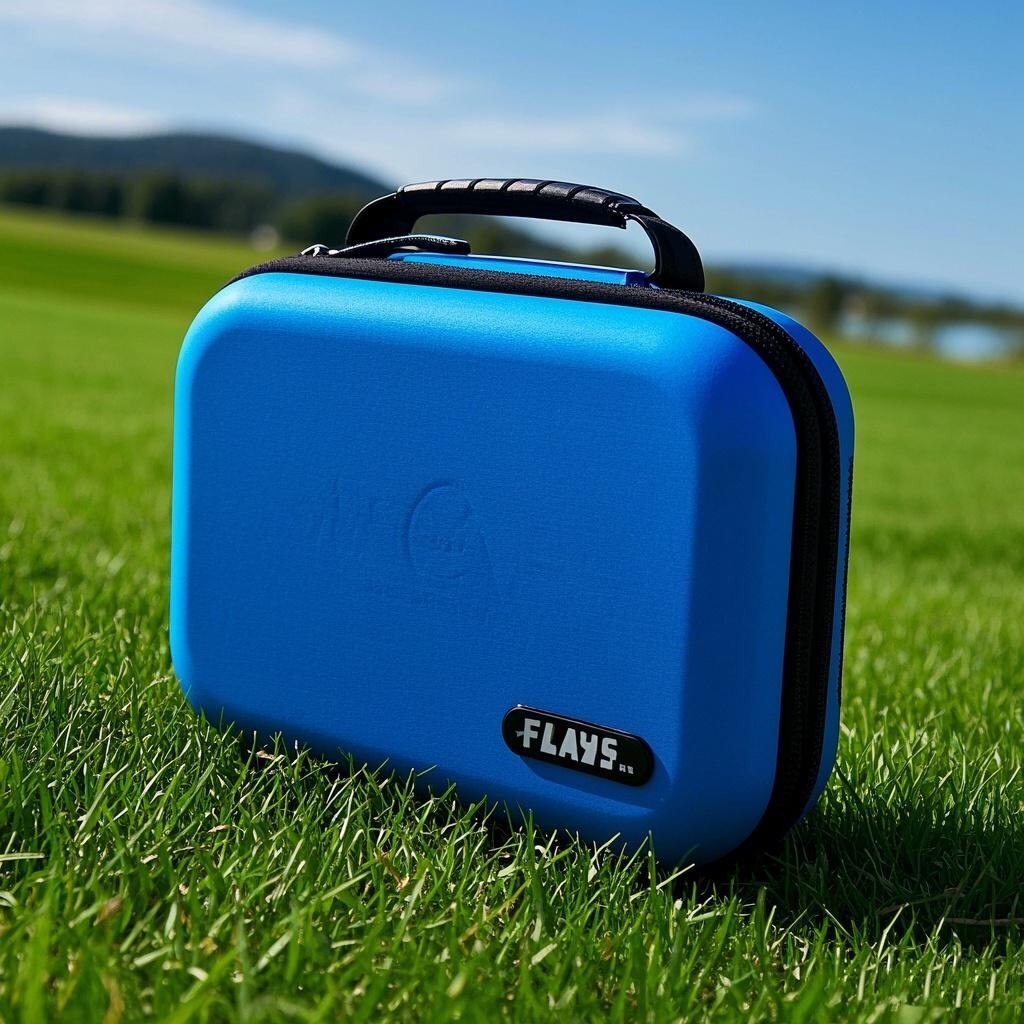התפתחות פתרונות האחסון המודרניים
עולם העיצוב הפנימי ופתרונות האחסון עברו שינוי מרשים בשנים האחרונות. בראש המהפכה הזו עומד אחסון מ-EVA, חומר ומושג מהפכניים המשנים את הדרך בה אנחנו חושבים על ארגון החללים שלנו. הגישה המהדרת הזו לאחסון משכה את תשומת הלב של מעצבים מובילים ברחבי העולם, ומציעה שילוב מושלם של תפקודיות, אסתטיקה וקיימות.
מרחבים מודרניים דורשים פתרונות אחסון שמעל ומעבר לאחסון פריטים – הם חייבים להגביר את העיצוב הכולל תוך הגדלת יעילות. מערכות איחסון EVA הופיעו כתשובה לדרישות המורכבות הללו, ומציעות גמישות שאינה תואמת לשיטות האחסון המסורתיות. ממרחבים מגורים לסביבות מסחריות, השימוש ב-EVA לאחסון ממשיך להתרחב, וקובע סטנדרטים חדשים בתעשייה.
הבנת טכנולוגיית איחסון EVA
חדשנות בחומר והרכבו
מערכות איחסון EVA משתמשות באטילן ויניל אצetat (Ethylene Vinyl Acetate), פולימר רב-תכליתי המשלב עמידות עם גמישות. הרכב החומרי הזה מאפשר פתרונות עיצוב יצירתיים תוך שמירה על שלמות מבנית. המבנה המולקולרי הייחודי של EVA מספק עמידות יוצאת דופן לשחיקה ושבר, מה שהופך אותו לבחירה אידיאלית ליישומי איחסון לטווח ארוך.
תהליך הייצור של רכיבי אחסון מאטומרי EVA כולל טכנולוגיה מתקדימת המבטיחה איכות וביצועים עקביים. באמצעות בקרת טמפרטורה ולחץ זהירה במהלך הייצור, יצרנים יכולים ליצור פתרונות איחסון עם דרגות שונות של צפיפות וגמישות, המתאימים לצרכים ויישומים ספציפיים.
תועלת סביבתית וקיימות
היבט המרהיב ביותר באחסון EVA הוא הרגל הסביבתי שלו. החומר ניתן להחזרה ויוצר פסולת מינימלית בתהליך הייצור. מעצבים נמשכים לפתרונות איחסון מ-EVA בשל התאמה לדרישות הגוברות לגישות עיצוב עמידות בסביבה. האורך בחזקת ה-EVA מוצרים גם אומר החלפה פחות תכופה, מה שמפחית את הצריכה הכוללת של משאבים.
יתרה מכך, מערכות איחסון של EVA לעתים קרובות דורשות פחות חומרים נוספים להתקנה ולתחזוקה בהשוואה לאפשרויות האיחסון המסורתיות. יעילות זו בשימוש במשאבים נמשכת לאורך מחזור החיים של המוצר, מייצור ועד לשימור eventual, מה שעושה ממנו בחירה אחראית סביבתית עבור מרחבים מודרניים.
יוקרת עיצוב והרחבת אסתטית
יכולות התאמה אישית
הגמישות המובנית במערכות איחסון של EVA מספקת למפתחים חופש יצירתי ללא תקדים. החומר יכול להיות מת molded כמעט לכל צורה או תבנית, ומאפשר פתרונות מותאמים שמתאימים בצורה מושלמת למקומות ולדרישות ספציפיים. התאימות הזו מאפשרת יצירת פתרונות איחסון המשולבים באופן חלק עם רכיבי בניין קיימים.
אפשרויות הצבע והגימור של אחסון EVA הן בהצלחה רבה, ונותנות לעורכים את היכולת להתאים או לספק ניגוד מול כל פלטת פנים. מהגימורים המטושטשים והחלקים ועד לפני השטח העצמתיים והמורכבים, אפשרויות ההטמעה אינסופיות, מה שגורם לאחסון EVA להיות מועדף על ידועים המעוניינים ליצור חללים ייחודיים וממותגים.
תכונות אופטימיזציה של מרחב
פתרונות אחסון מודרניים של EVA מצטיינים ביעילות מקסימלית של החלל הזמין באמצעות תכונות עיצוב חדשניות. רכיבים מודולריים יכולים להיוות מוקמים באינספור דרכים, ומתאימים לצרכים משתנים ולהגבלות של חלל. המאפיין הקל של חומרי EVA מאפשר יחידות אחסון גדולות יותר מבלי לפגוע בשלמות המבנית או לצורך במערכות תמיכה מורכבות.
אלמנטים של עיצוב חכם כגון תאים ניתנים לכיוון, חלקים ניתנים להרחבה ורכיבים שמתאימים זה לזה הופכים את מערכות האחסון из EVA ליעילות במיוחד מבחינת ניצול השטח. תכונות אלו מושכות במיוחד לעורכים העוסקים במרחבים עירוניים קומפקטיים שבהם כל אינץ' מרובע חייב להיות מותאם לאופטימיזציה.

יישומים פרקטיים ואשכול
פתרונות מגורים
בסביבות ביתיות, אחסון מ-EVA שינה את הגישה שלנו לארגון. מערכות ארון ועד אחסון במטבח, היצירתיות של החומר מאפשרת פתרונות מותאמים לצרכים ספציפיים של הבית. מעצבים מיישמים את אכסון ה-EVA בצורה חדשנית, ומייצרים כל מה ממשרדי קיר מובנים ועד לפתרונות איחסון צפים שמаксמים את החלל האנכי.
העמידות של אחסון EVA הופכת אותו מתאים במיוחד לאזורים עתירי תנועה ולאחסונים הנגישים לעיתים קרובות. התנגדותו ללחות והמשטח הקל לניגוב הופכים אותו אידיאלי לאחסון בحمام, בעוד תכונות הבלימה שלו הופכות אותו מושלם להגנה על פריטים יקרים בארונות איחסון בחדר השינה ובמרחבי המגורים.
יישומים מסחריים
ה섹טור המסחרי אימץ את אחסון EVA בזכות היכולת לעמוד בצרכים עסקיים מגוונים תוך שמירה על מראה אסתטי. סביבות משרד מתfitsות מהמערכות המודולריות של EVA שאפשר לשנותן בהתאם לצמיחת הצוות ולשינויי דרישות החלל. חנויות משתמשות בפתרונות אחסון EVA הן לארגון מאחור והן למערכות תצוגה בפני הלקוח.
מוסדות בריאות וחינוך פונים все יותר לאחסון מ-EVA בזכות תכונותיו האנטי-מיקרוביאליות וקלות הניקיון שלו. עמידותו של החומר בסביבות עם תנועה רבה הופכת אותו לבחירה מעולה לישומים דרמטיים אלו, בעוד גמישותו האסתטית מאפשרת לו להתאים ולהשלים סביבות מקצועיות.
מגמות וחדשנות העתיד
יכולות אינטגרציה חכמות
העתיד של אחסון EVA קשור באופן הולך וגובר בטכנולוגיה חכמה. מעצבים חוקרים דרכים להטמעת אלמנטים דיגיטליים במערכות אחסון מ-EVA, החל מאינטגרציה של תאורת LED ועד לנעילי חכם ומערכות ניהול מלאי. התקדמות טכנולוגית זו הופכת את פתרונות האיחסון לאינטראקטיביים וידידותיים למשתמש יותר מתמיד.
פיתוח של מערכות אחסון EVA עם יכולת אינטרנט של הדברים מבטיח לשנוט את האופן שבו אנו מתנגשים עם אזורי האחסון שלנו. ממכанизמי פתיחה אוטומטיים ועד תאים עם בקרת אקלים, אפשרויות האינטגרציה החכמה מתרחבות במהירות, מה שהופך את אחסון EVA לאפשרות אפילו יותר מושכת לעורכי עיצוב בעלי חזון עתידי.
טנדים עיצוביים חדשים
המגמות האחרונות בעיצוב אחסון EVA מרכזות תשומת לב על מינימליזם ורב-תכליות. מעצבים יוצרים פתרונות אחסון שמשמשים גם כאלמנטים דקורטיביים, ובכך מטשטשים את הגבול בין רהיטים לאחסון. פיתוחם של טיפולים חדשים בשטח הפנים וטכניקות גימור ממשיך להרחיב את היכולות האסתטיות של מערכות אחסון EVA.
אלה נטולות ביולוגיה משולבות בתוך פתרונות אחסון EVA, עם מערכות המאפשרות צמחייה או מדמות צורות טבעיות. מגמה זו משקפת רצון גובר לשלב טבעיות במרחבים פנימיים תוך שמירה על תפקודיות אחסון מעשית.
שאלות נפוצות
איך שורדת אחסון EVA בהשוואה לחומרי אחסון מסורתיים במונחים של עמידות?
מערכות אחסון EVA מציעות בדרך כלל עמידות טובה יותר בהשוואה לחומרים מסורתיים כמו עץ או פלסטיק. הן עמידות בפני שחיקה, נזק מלח, ומכה טובים יותר מאפשרויות המסורתיות, ובעתיד ישרות מספר שנים ארוכות יותר עם טיפול ושימור מתאימים.
מה גורם לאחסון EVA להיות מושך במיוחד לעורכי פנים?
עורכי פנים מעריכים את אחסון EVA בגלל הwersatility בעיצוב, אפשרויות התאמה, והיכולת להתמזג בצורה חלקה עם סגנונות ארכיטקטוניים שונים. הטבע הקל משקל והיציבות המבנית של החומר מאפשרים פתרונות יצירתיים שלא היו אפשריים עם חומרים מסורתיים.
האם פתרונות אחסון EVA הם בר-קיימא מבחינה סביבתית?
כן, פתרונות אחסון מאבה נחשבים עמידים מבחינה סביבתית בשל אופיים החזיר, מחזור החיים הארוך שלהם ותהליך הייצור היעיל. לחומר נדרשת פחות אנרגיה לייצור בהשוואה לרבים מהחלופות, והוא יוצר מינימום של פסולת במהלך הייצור.
איזו תחזוקה נדרשת למערכות אחסון מאבה?
למערכות אחסון מאבה נדרשת תחזוקה מינימלית, ובדרך כלל נדרשת רק ניקיון רגיל בסבון ומים. החומר עמיד לכתמים ולנזק, מה שעושה אותו לבחירה אידיאלית לשימוש ביתי ומסחרי, שם רצויה תחזוקה מינימלית.

